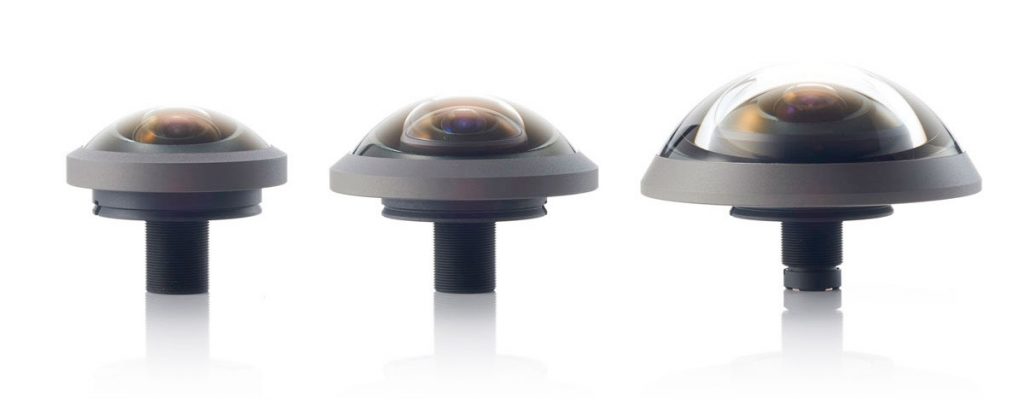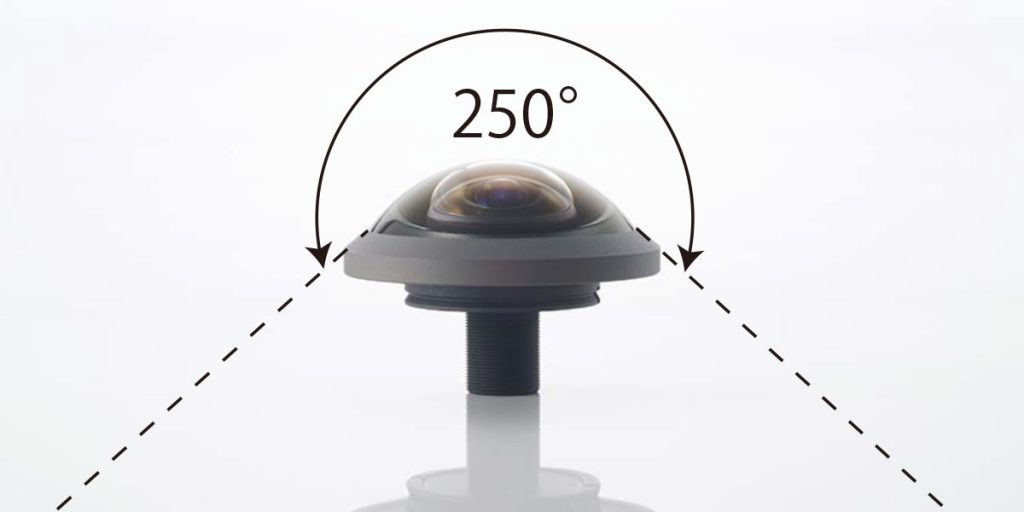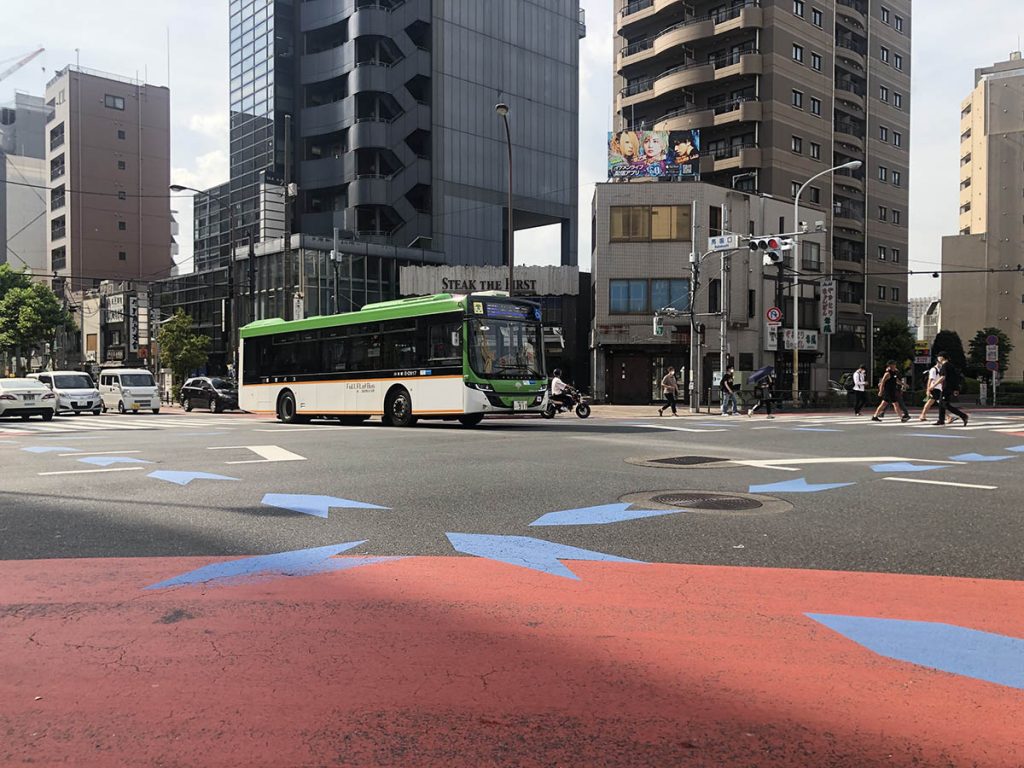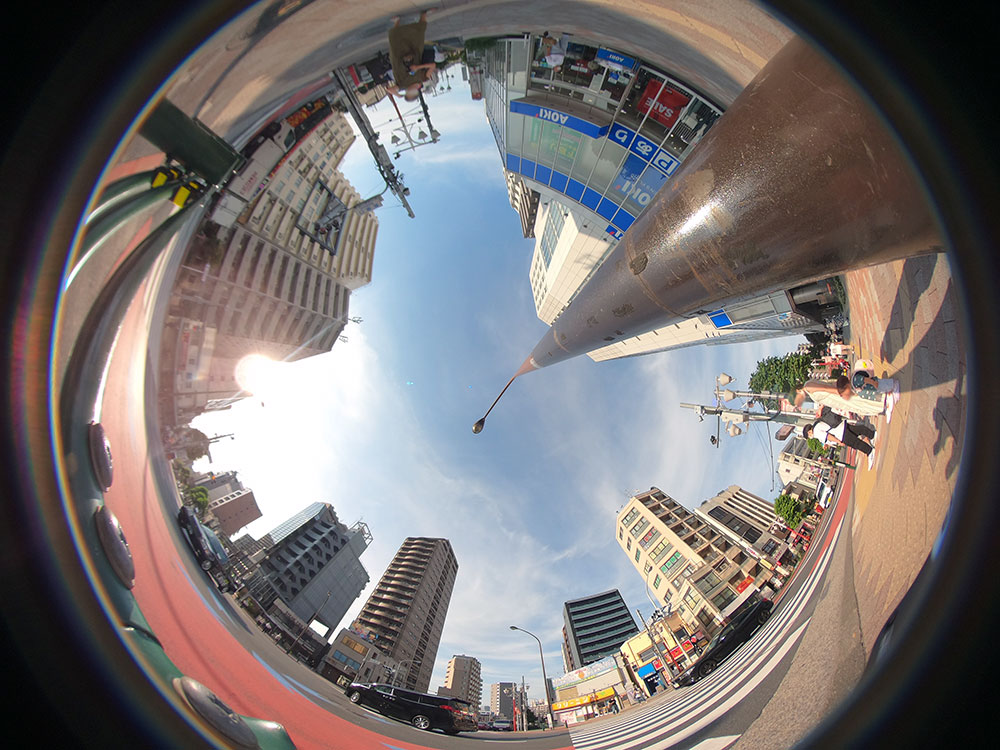
This section provides examples of how Entaniya’s ultra-wide angle fisheye lenses are used.
Entaniya’s fisheye lenses are ultra-wide angle fisheye lenses with a field of view of over 200 degrees.
The fisheye lenses pictured above are the Entaniya Fisheye M12 series, from left to right: 220°, 250°, and the world’s widest ultra-wide angle lens, 280°.
The field of view of a typical fisheye lens is about 180 degrees, so it is possible to capture images and photographs with an even wider angle of view than that.
Image of ultra-wide-angle fisheye lens

You may be wondering what kind of images you would get if you shoot with a lens with an ultra-wide-angle field of view of 180 degrees or more. The photo above was taken with the Entaniya Fisheye M12 250, which has a field of view of 250 degrees.
The field of view is an ultra-wide angle of 250 degrees, but since it is represented as a flat surface (2D) on the screen, it may be difficult to convey the extent of the field of view. It may not look much different from a photo taken with an ordinary fisheye lens.
Lens that can capture more backward than the lens

In reality, it is 250 degrees, so the image above is taken farther back than the lens.
For example, the curb in the lower center of the photo looks like a U-shaped bend, but it is actually a straight line, and the camera is oriented at 90 degrees to the straight line. In other words, the buildings and signs at the edges of the picture are actually behind the lens.
Utilizing an ultra-wide angle fisheye lens at an intersection
The image was taken with a typical wide-angle lens

The photo above shows a typical cross street (intersection), taken with a smartphone. Smartphone lenses are generally wide-angle lenses, so they can capture a wider area than standard lenses. However, when photographed from the corner of an intersection, only a portion of the intersection can be captured.
Image was taken with a 250-degree fisheye lens

The photo above was taken with the Entaniya Fisheye M12 250. Like the photo taken with a smartphone, it was taken from the corner of the intersection, facing diagonally.
It may be hard to tell how wide an area was captured just from this.

I have numbered the crossroads intersections.
As you can see, four directions are captured.
In other words, with a single camera, this lens can capture all four directions of a crossroad intersection at the same time.
Shooting point
For reference, here is the actual location of the photo shoot.
Advantages of using ultra-wide angle fisheye lenses
A small number of units can cover blind spots.
As you know, many cameras and other devices are installed at intersections. Their purposes are various, such as security cameras, surveying traffic volume, checking traffic signals, recording traffic accidents, etc. By using wide-angle lenses, the number of cameras to be installed can be reduced.
Fewer cameras will reduce the cost of equipment, reduce problems, and make maintenance easier.
Although there is a problem that subjects appear smaller than with ordinary lenses, many cameras have been developed recently that can take high-resolution images even with small sensors, so that even wide-angle images can be checked in detail.
Zenith photography can record 360 degrees including the ground.

When taking a zenith shot with the features of an ultra-wide-angle fisheye lens, a 360-degree image can be obtained, excluding the bottom part of the image. Although a similar image can be obtained by zenith photography with a common fisheye lens, the crucial object is often in the horizontal part, which cannot be captured with a 180-degree fisheye lens.
With a 250-degree fisheye lens, you can take zenith shots that include the ground far below the horizon.
Note that the image above was taken with a camera with a 1/2.3″ sensor, so the top and bottom are cut off, but a 1/7″ sensor would produce a circular image.
Critical difference between 360-degree cameras
Looking at the image above, one might think, “Why not just use a 360-degree camera?” Some may think, “Why not a 360-degree camera?
However, there is a crucial difference between images shot with a single lens and those shot with a compound-eye 360-degree camera.
truthfulness
In the case of 360-degree cameras, “fixes” are added to stitch together multiple images. This can detract from the truthfulness of the footage when it is used to record facts. It makes sense to record images as they are without any “fixes,” and images captured with a monocular lens have a significant advantage in terms of veracity.
Lenses that have never existed before creating applications that have never existed before.
In addition to the Entaniya Fisheye M12 series (lenses with M12/P0.5 mounts often used in board and industrial cameras) introduced here, Entaniya’s fisheye lenses can also be used in cameras with large sensors for photography and video The Entaniya Fisheye HAL series is available.
Both of these fisheye lenses are capable of capturing images with unprecedentedly wide angles, and are being used in applications never before seen by those who have realized their appeal and characteristics.
